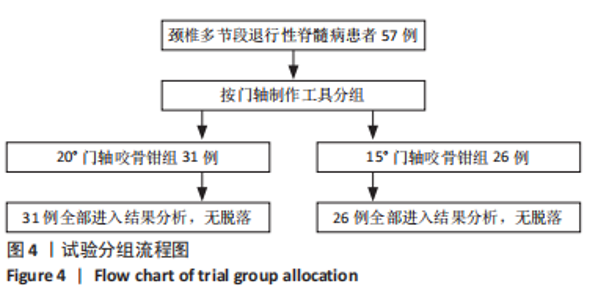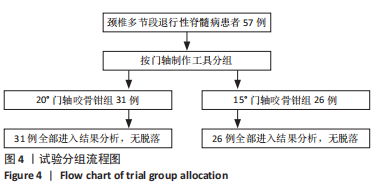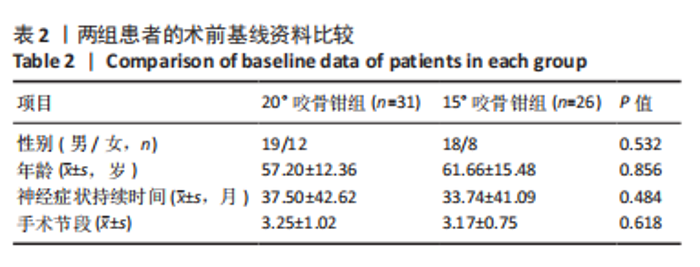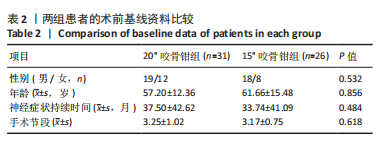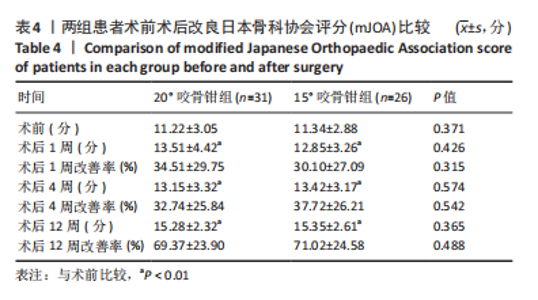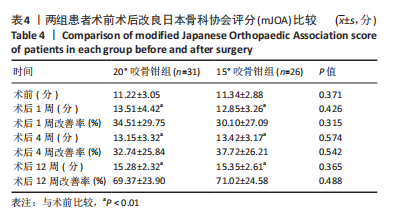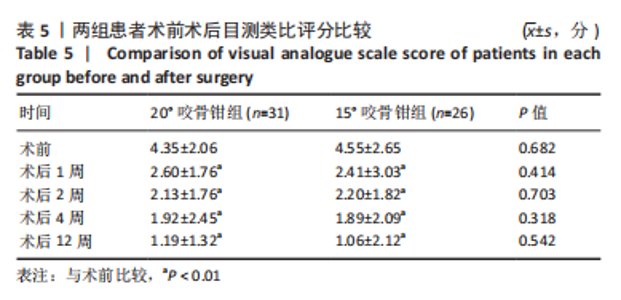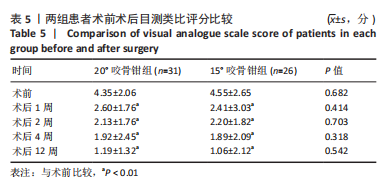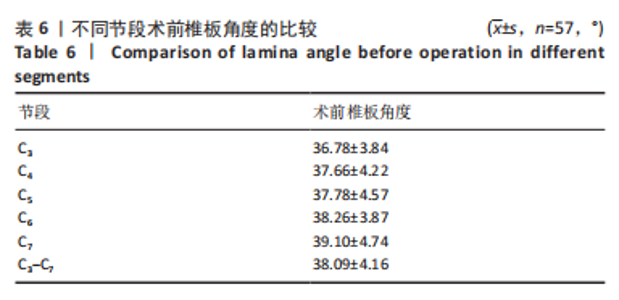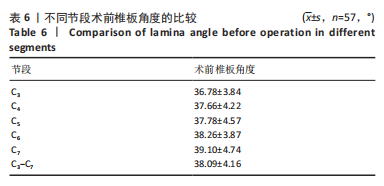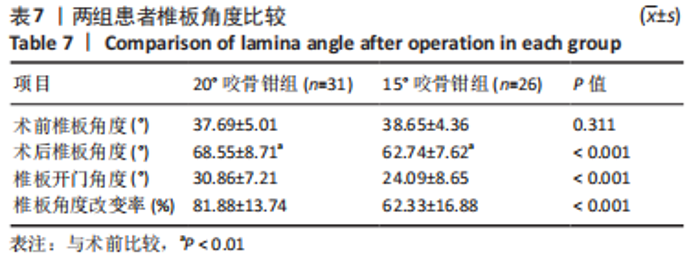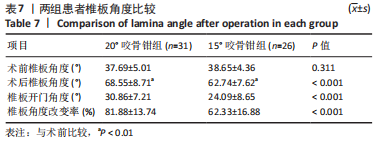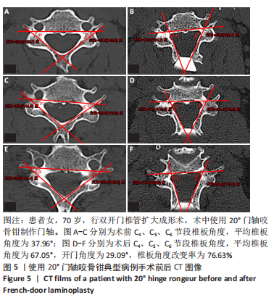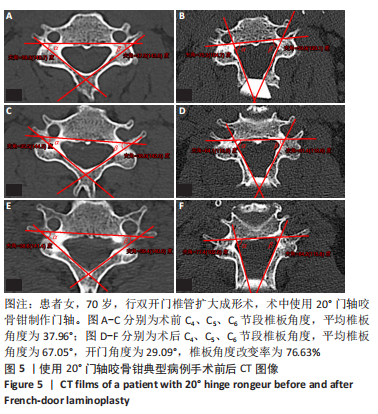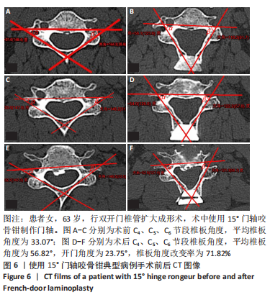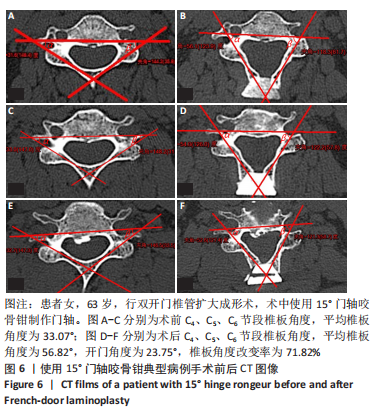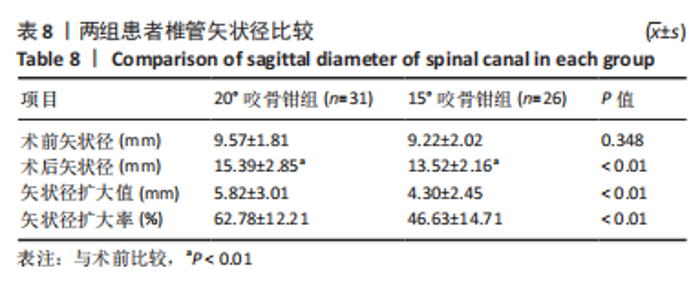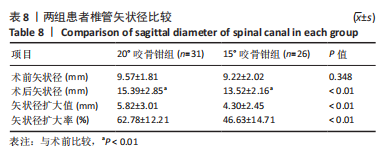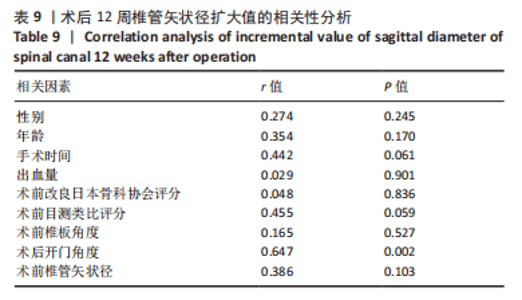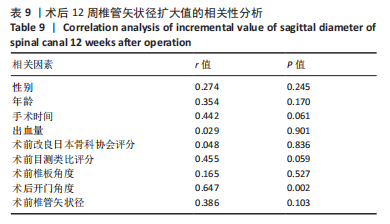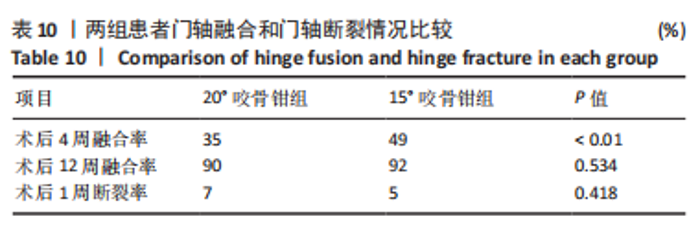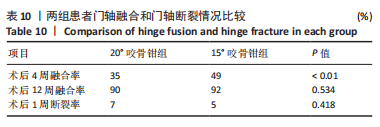[1] KUROKAWA T, TSUYAMA N, TANAKA H. Enlargement of spinal canal by the sagittal splitting of the spinous process. Bessatsu Seikeigeka. 1982;2(2):234-240.
[2] 蔚兰哲, 崔尚斌, 魏富鑫, 等. 颈椎开门椎板成形术使用不同工具制作门轴对开门角度的影响[J]. 中国临床解剖学杂志,2021,39(2): 224-227+230.
[3] BOIJSEN E. The cervical spinal canal in intraspinal expansive processes. Acta Radiol. 1954;42(2):101-115.
[4] RHEE JM, REGISTER B, HAMASAKI T, et al. Plate-only open door laminoplasty maintains stable spinal canal expansion with high rates of hinge union and no plate failures. Spine (Phila Pa 1976). 2011;36(1): 9-14.
[5] UEMATSU Y, TOKUHASHI Y, MATSUZAKI H. Radiculopathy after laminoplasty of the cervical spine. Spine (Phila Pa 1976). 1998;23(19): 2057-2062.
[6] HIRABAYASHI K, WATANABE K, WAKANO K, et al. Expansive open-door laminoplasty for cervical spinal stenotic myelopathy. Spine (Phila Pa 1976). 1983;8(7):693-699.
[7] MITSUNAGA LK, KLINEBERG EO, GUPTA MC. Laminoplasty techniques for the treatment of multilevel cervical stenosis. Adv Orthop. 2012; 2012:307916.
[8] ITOH T, TSUJI H. Technical improvements and results of laminoplasty for compressive myelopathy in the cervical spine. Spine (Phila Pa 1976). 1985;10(8):729-736.
[9] KOHNO K, KUMON Y, OKA Y, et al. Evaluation of prognostic factors following expansive laminoplasty for cervical spinal stenotic myelopathy. Surg Neurol. 1997;48(3):237-245.
[10] GU Z, ZHANG A, SHEN Y, et al. Relationship between the laminoplasty opening size and the laminoplasty opening angle, increased sagittal canal diameter and the prediction of spinal canal expansion following open-door cervical laminoplasty. Eur Spine J. 2015;24(8):1613-1620.
[11] PARK JH, ROH SW, RHIM SC, et al. Long-term outcomes of 2 cervical laminoplasty methods: midline splitting versus unilateral single door. J Spinal Disord Tech. 2012;25(8):E224-229.
[12] IMAGAMA S, MATSUYAMA Y, YUKAWA Y, et al. C5 palsy after cervical laminoplasty: a multicentre study. J Bone Joint Surg Br. 2010;92(3): 393-400.
[13] TSUJI T, MATSUMOTO M, NAKAMURA M, et al. Factors associated with postoperative C5 palsy after expansive open-door laminoplasty: retrospective cohort study using multivariable analysis. Eur Spine J. 2017;26(9):2410-2416.
[14] WANG XY, DAI LY, XU HZ, et al. Prediction of spinal canal expansion following cervical laminoplasty: a computer-simulated comparison between single and double-door techniques. Spine (Phila Pa 1976). 2006;31(24):2863-2870.
[15] OGAWA Y, CHIBA K, MATSUMOTO M, et al. Long-term results after expansive open-door laminoplasty for the segmental-type of ossification of the posterior longitudinal ligament of the cervical spine: a comparison with nonsegmental-type lesions. J Neurosurg Spine. 2005;3(3):198-204.
[16] HUAN Y, LIU J, XING W, et al. Application of piezosurgery osteotomy in cervical laminoplasty: prospective, randomized, single-blind. Clin Comp Study. 2020;4(2):32-38.
[17] SUZUKI K, WANIBUCHI M, MINAMIDA Y, et al. Heat generation by ultrasonic bone curette comparing with high-speed drill. Acta Neurochir (Wien). 2018;160(4):721-725.
[18] NAKASE H, MATSUDA R, SHIN Y, et al. The use of ultrasonic bone curettes in spinal surgery. Acta Neurochir (Wien). 2006;148(2):207-212; discussion 212-213.
[19] 王超,党耕町,陈仲强,等. 颈椎X线片椎管矢状径的测量统计[J]. 中国脊柱脊髓杂志,1993(2):50-52.
[20] OKADA Y, IKATA T, KATOH S, et al. Morphologic analysis of the cervical spinal cord, dural tube, and spinal canal by magnetic resonance imaging in normal adults and patients with discussion of rupture . Spine (Phila Pa 1976). 1994;19(20):2331-2335.
[21] 张金明. 颈椎后路减压术后脊髓漂移与疗效相关性及漂移机制的探讨[D]. 衡阳: 南华大学,2011.
[22] LEE DH, PARK SA, KIM NH, et al. Laminar closure after classic Hirabayashi open-door laminoplasty. Spine (Phila Pa 1976). 2011; 36(25):E1634-1640.
[23] LEE J, OZDOGANLAR OB, RABIN Y. An experimental investigation on thermal exposure during bone drilling. Med Eng Phys. 2012;34(10): 1510-1520.
[24] RHEE JM, SHI WJ, CYRIAC M, et al. The P-mJOA: A Patient-derived, Self-reported Outcome Instrument for Evaluating Cervical Myelopathy: Comparison with the mJOA. Clin Spine Surg. 2018;31(2):E115-E120.
[25] ELNADY B, HASSAN AAA, HASSAN KM, et al. Validation of a translated version of the modified Japanese Orthopedic Association (mJOA) cervical myelopathy score in an Arabic speaking population. SICOT J. 2021;7:50.
[26] BADHIWALA JH, HACHEM LD, MERALI Z, et al. Predicting Outcomes After Surgical Decompression for Mild Degenerative Cervical Myelopathy: Moving Beyond the mJOA to Identify Surgical Candidates. Neurosurgery. 2020;86(4):565-573.
[27] LONGO UG, BERTON A, DENARO L, et al. Development of the Italian version of the modified Japanese orthopaedic association score (mJOA-IT): cross-cultural adaptation, reliability, validity and responsiveness. Eur Spine J. 2016;25(9):2952-2957.
[28] KATO S, OSHIMA Y, OKA H, et al. Comparison of the Japanese Orthopaedic Association (JOA) score and modified JOA (mJOA) score for the assessment of cervical myelopathy: a multicenter observational study. PLoS One. 2015;10(4):e0123022.
[29] YANG J, KANG J, FENG D, et al. [Increased IL-1 and IL-6 expressions are negatively correlated with modified Japanese Orthopedic Association (mJOA) scores of discogenic low back pain]. Xi Bao Yu Fen Zi Mian Yi Xue Za Zhi. 2016;32(1):88-91. |
